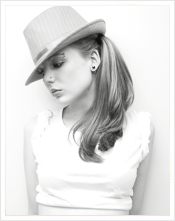Health & Safety Policy
 An employer must provide a Health and Safety policy if they have five or more employees.
An employer must provide a Health and Safety policy if they have five or more employees.
However, some hairdressers 'let out' chairs. In these cases, the hairdresser who rents the chair is not an employee - they are simply working at the owner's premises.
This means that the owner could have ten people working within his or her salon, yet have no employees.
In these cases, the Health and Safety at Work Act still imposes a duty on the owner and they must provide a written policy statement . Self employed people have a legal duty not to put other people at risk by the way they work.
An employer must provide a risk assessment. This must be written if the number of employees totals five or more. Further guidance can be found on the Health and Safety Executive's Risk Assessment website.
Examples of the main type of hazards found in a hairdressers can be:
- Slips, trips and falls
- Fire
- Electrical Safety
- Aerosols
- Manual Handling
Accidents
If you are an employer, are self employed or in control of work premises you have duties under Report of Injuries, Diseases and Dangerous Occurrences Regulations 1995 (RIDDOR).
You must make a report if one of the following occurs:
- a death or major injury eg chemical burn to the eye
- an injury that lasts over three days eg a serious slip of the scissors
- disease eg Occupational Dermatitis, or
- a dangerous occurrence
Many people do not realise that occupational dermatitis is a notifiable disease under RIDDOR. Hairdressers are at risk of getting this as they are exposed to many abrasive chemicals. It is possible, however, to greatly reduce the risk of developing diseases such as this through correct risk assessment and a good Health and Safety policy.
First Aid
The minimum you should provide is:
- a suitably stocked first aid kit, and
- an 'appointed person'
An appointed person is someone with specific duties relating to first aid, but not necessarily trained in first aid. Everyone at work must be made aware of the first aid arrangements, eg by instruction and notices. Self employed people must also make sure that there are adequate first aid procedures at work.
Minimum Contents Of A First Aid Box
Your first aid box must contain:
- guidance leaflet
- 20 individually wrapped, sterile adhesive dressings of various sizes
- 2 sterile eye pads
- 4 individually wrapped triangular bandages
- 6 safety pins
- 6 medium sized and 2 large individually wrapped, sterile, unmedicated wound dressings, and
- 1 pair of disposable gloves
Because of the various chemicals used in hairdressers, you must provide more than the required minimum in your first aid box, such as eye washing facilities. You also need more disposable gloves. This is because Aids, HIV and Hepatitis can be transmitted through cuts from sharps.
Cleaning
You must make sure that hair clippings are swept up regularly, as these can be a major factor in the cause of slips.
It is also especially important to ensure you disinfect your scissors and razors, or you use disposable razors. If they are not clean they can cause transmission of diseases.
Hairdressers must be aware of the possible transmission of HIV, Aids and Hepatitis.
To quickly and efficiently disinfect equipment, use:
- steam
- antibacterial solutions, or
- antibacterial wipes
Equipment needs to be treated after each customer and left in an antibacterial solution overnight
Ventilation
It is important that the salons are well ventilated. This will prevent condensation and the accumulation of fumes. An open window can be effective or you could install an extractor system for the comfort of your clients.
WC facilities
There must be at least one toilet which both staff and customers can use. Ladies and gentlemen can share if there is a secure lock on the door.
Control Of Substances Hazarous To Health (COSHH)
This must be included in the risk assessment. There should not be a problem if:
- you follow the manufacturer's instructions when using equipment
- you follow the guidance provided in booklets such as A Guide to Health and Safety in the Salon, and
- the salon is well ventilated
You must provide protective clothing for both staff and customers. This should include:
- gloves
- overalls
- face screens
- goggles
This will prevent contact with the chemicals.
Chemicals should also be correctly stored:
- in staff only areas, or
- in a locked cupboard following the instructions on their containers
You must clear up any spillages immediately.